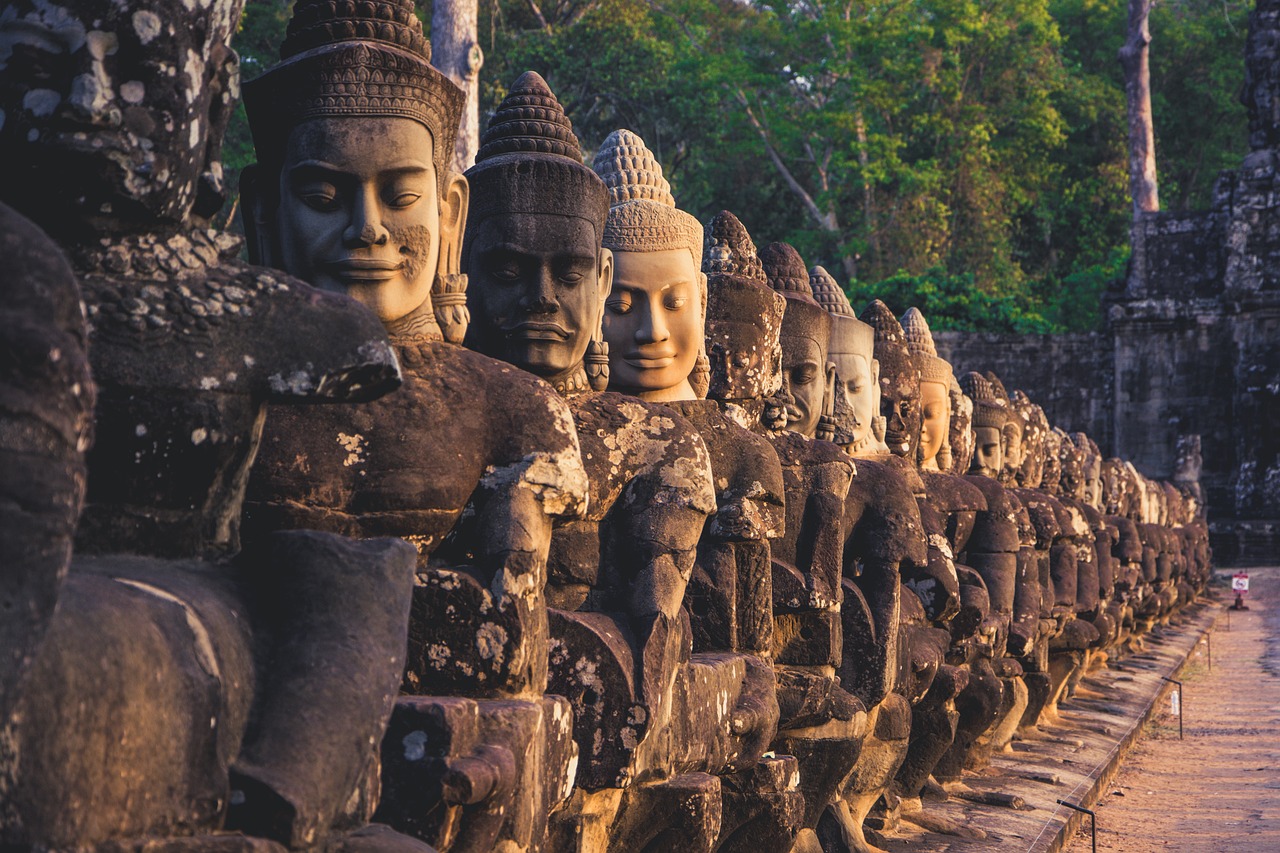The Rise of the Khmer Empire - Angkor Wat's Glory
The Khmer Empire, with its illustrious history and architectural wonders, stands as a testament to the grandeur of Southeast Asia. At the heart of this empire lies the iconic temple complex of Angkor Wat, a symbol of cultural richness and artistic excellence.
Originating from humble beginnings, the Khmer Empire gradually rose to power through strategic alliances, military conquests, and innovative governance. Its ascendancy was marked by a blend of cultural influences, shaping a unique identity that resonated throughout the region.
Angkor Wat, the jewel of the Khmer Empire, embodies the pinnacle of Khmer architecture and spiritual devotion. As the largest religious monument globally, it exudes a sense of mystique and grandeur that captivates all who behold its intricate design and profound symbolism.
Within the walls of Angkor Wat, architectural marvels await discovery, showcasing the engineering prowess and artistic finesse of the Khmer civilization. From towering spires to intricate bas-reliefs, each structure within the complex tells a story of faith, innovation, and cultural heritage.
The religious and cultural significance of Angkor Wat cannot be understated, with Hindu and Buddhist influences interwoven into its very fabric. These spiritual practices, along with traditional customs, played a vital role in shaping the Khmer Empire's identity and fostering a sense of unity among its people.
As the Khmer Empire expanded its territories and entered its golden age, under the leadership of figures like Jayavarman II, arts and culture flourished. The empire's reach extended far and wide, leaving a lasting legacy of architectural splendor and artistic achievement.
However, the decline of the Khmer Empire was inevitable, plagued by invasions, internal conflicts, and the eventual abandonment of Angkor. Despite its fall from power, the legacy of the empire continues to endure, reminding us of the ebb and flow of history's tides.
In modern times, efforts to preserve and protect Angkor Wat have taken center stage, with ongoing conservation projects aimed at safeguarding this UNESCO World Heritage site for future generations. Through these endeavors, the glory of the Khmer Empire lives on, a beacon of inspiration for all who seek to unravel the mysteries of the past.

Origins of the Khmer Empire
The origins of the Khmer Empire can be traced back to the early 9th century when King Jayavarman II established himself as the ruler of the region. Born out of a blend of indigenous cultures and Indian influences, the empire began to take shape with the founding of the capital city of Hariharalaya. This marked the beginning of a period of expansion and consolidation as the Khmer rulers sought to assert their dominance over neighboring territories.
One of the key factors that contributed to the rise of the Khmer Empire was its strategic location in the heart of Southeast Asia, allowing it to control important trade routes and establish lucrative diplomatic relations with neighboring kingdoms. The empire's early rulers, known for their military prowess and diplomatic acumen, were able to forge alliances and expand their influence across the region.
Furthermore, the adoption of Indian cultural and religious practices, particularly Hinduism, played a significant role in shaping the identity of the Khmer Empire. The construction of elaborate temples and shrines dedicated to Hindu deities served not only as religious centers but also as symbols of the empire's power and prestige.
As the empire continued to grow in size and influence, it assimilated diverse ethnic groups and absorbed elements of their cultures, creating a rich tapestry of traditions that defined the Khmer civilization. This cultural fusion, combined with the empire's military might and administrative sophistication, laid the foundation for its emergence as a dominant force in Southeast Asia.

Angkor Wat: Jewel of the Khmer Empire
Angkor Wat stands as the crowning jewel of the Khmer Empire, a testament to the architectural prowess and cultural richness of the ancient civilization. This magnificent temple complex, nestled amidst the lush jungles of Cambodia, serves as a beacon of Khmer heritage and spirituality. The sheer grandeur and intricate details of Angkor Wat leave visitors in awe, reflecting the empire's glory at its peak.

